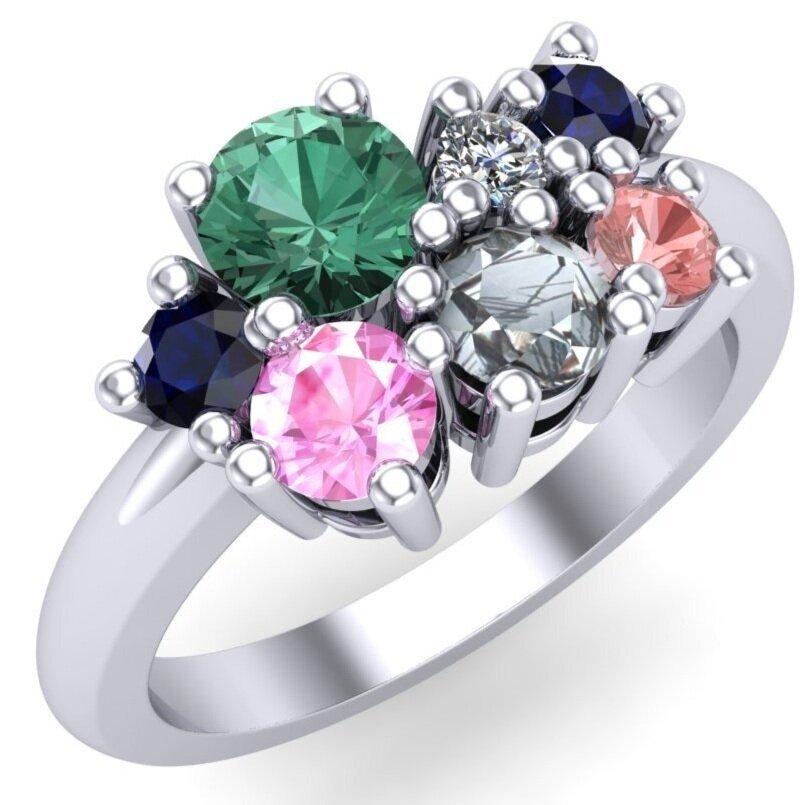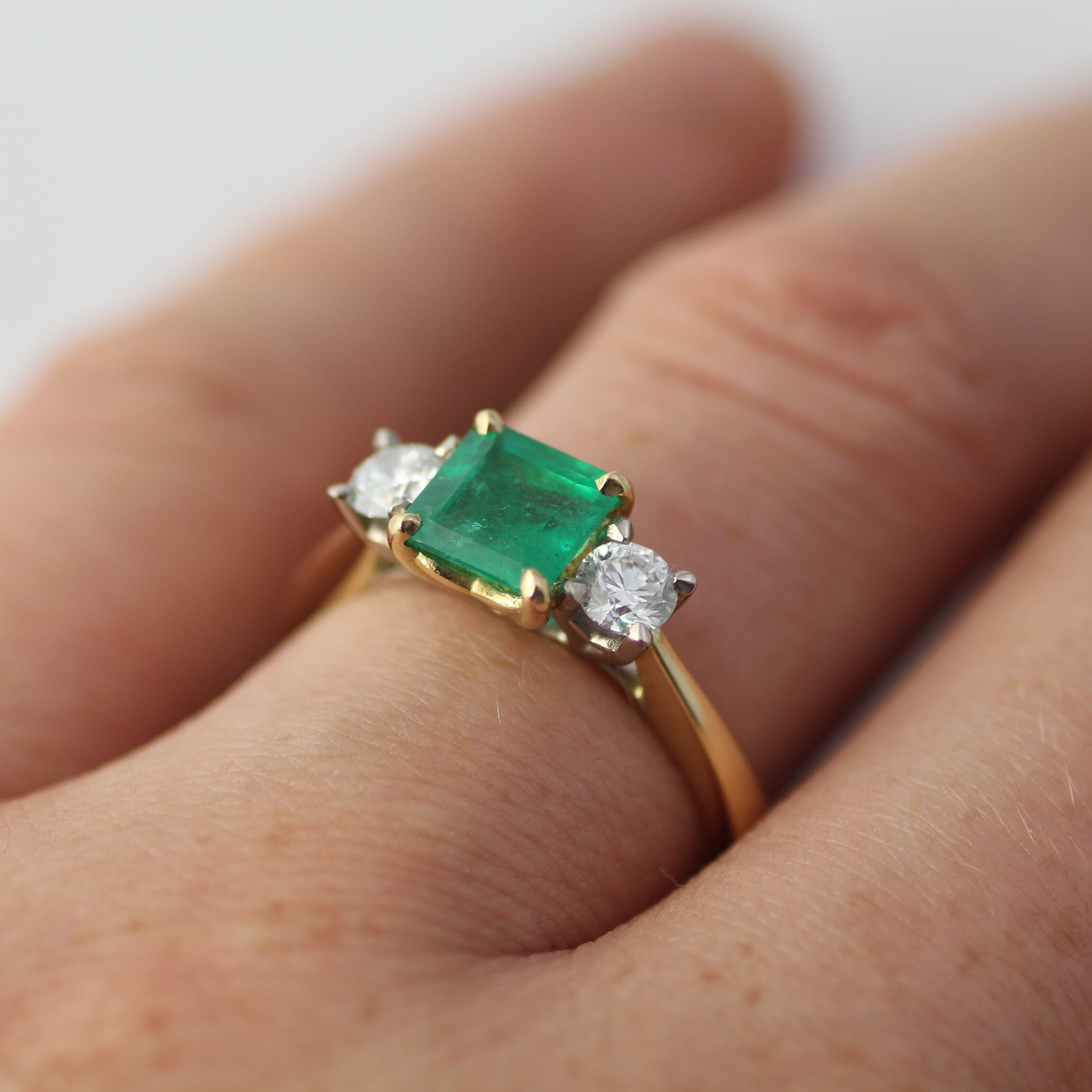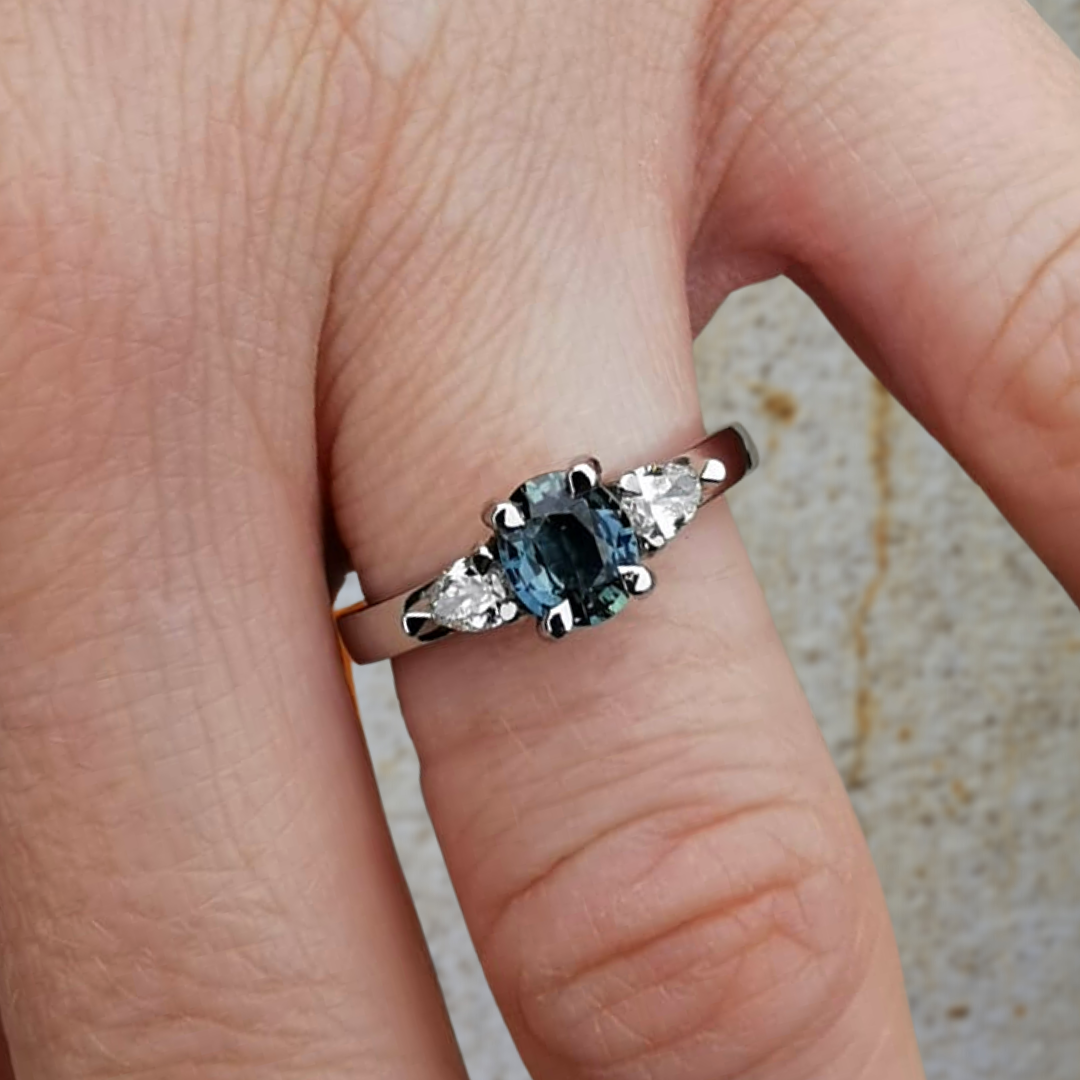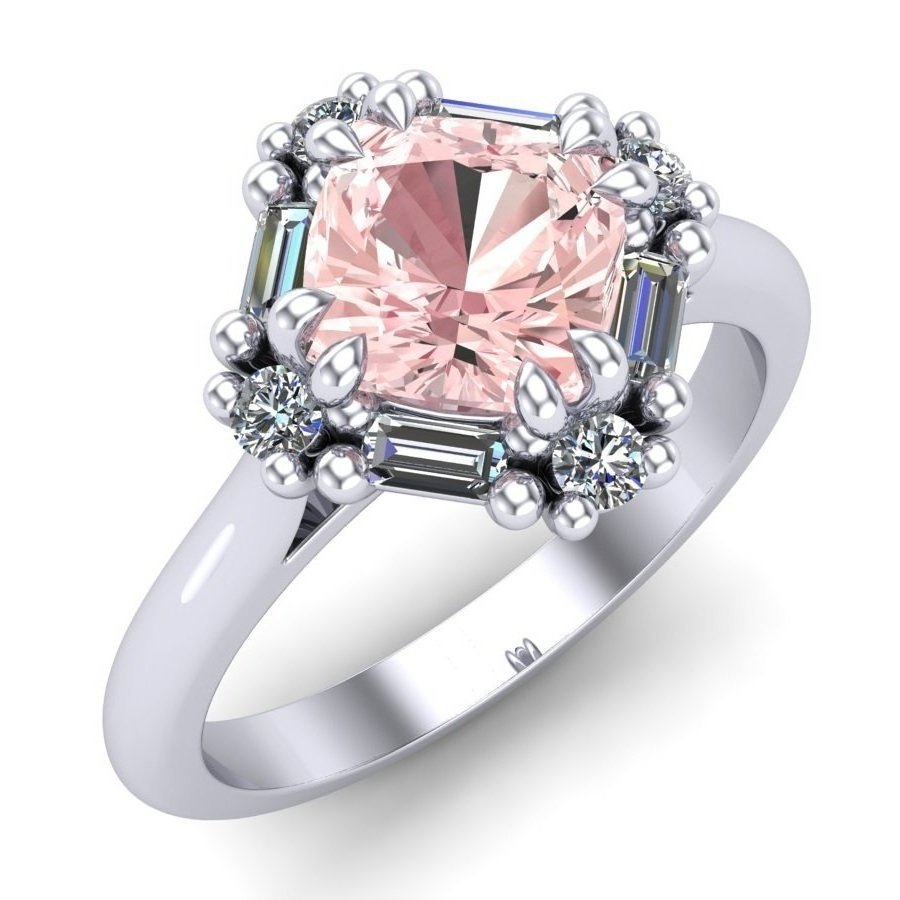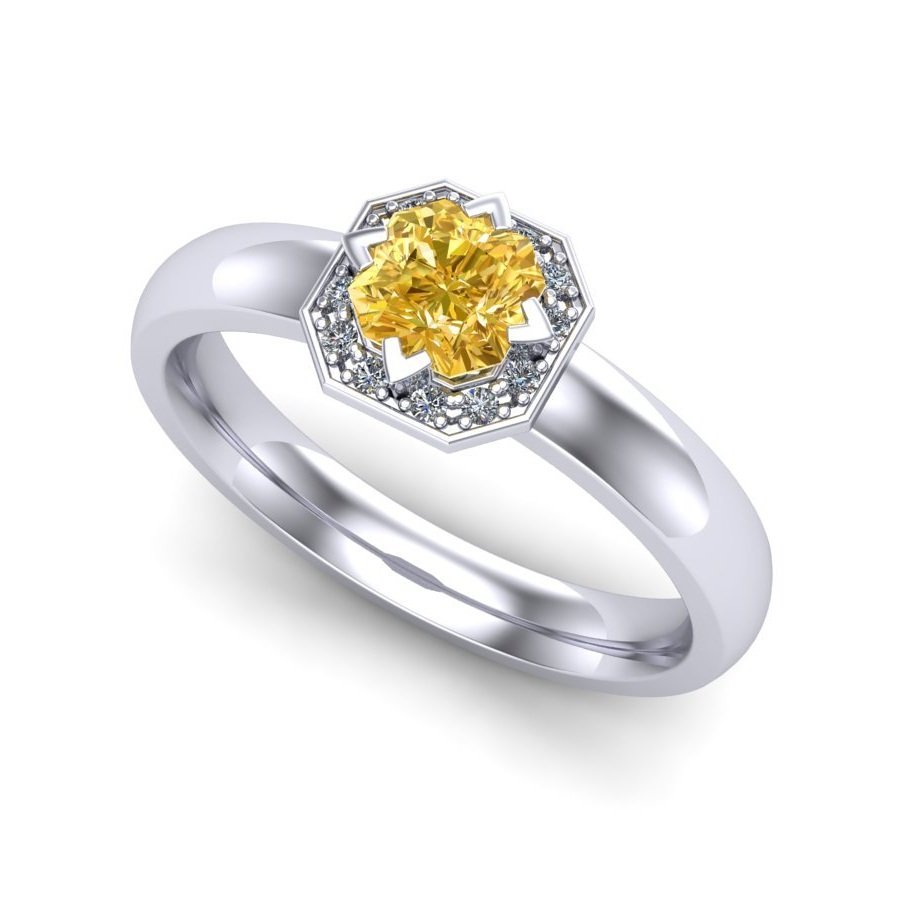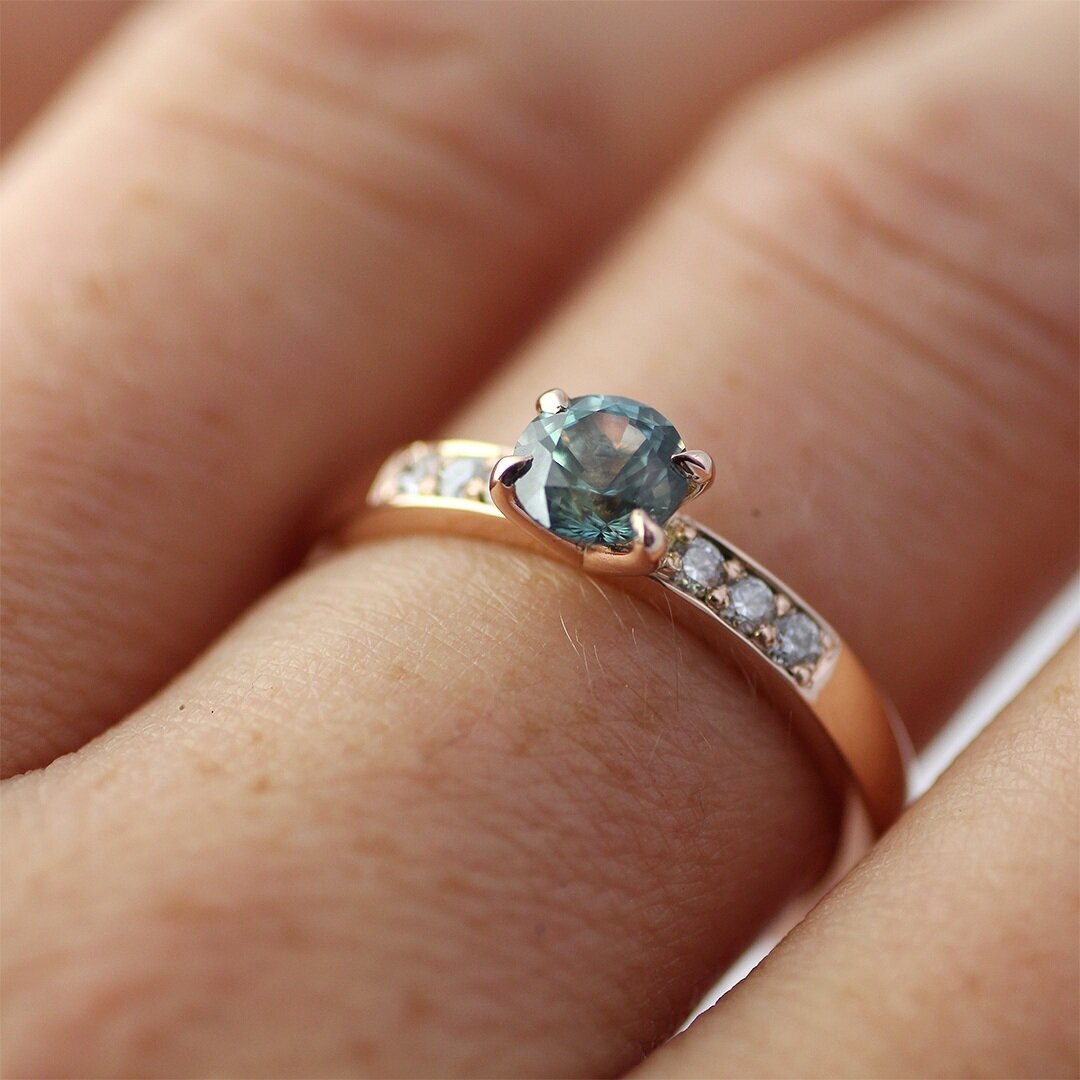Diamonds explained - A modern guide to old rocks
Author: Nicholas Barker
Buying a diamond is possibly one of the most complex retail conundrums to decipher. I remember the first time Natalia (the boss) explained diamonds to me—I was more confused by the end of the conversation than I had ever been. But years later, the definitions and standards have become second nature, helping me guide clients to find the perfect stone for their taste and budget.
Where Did It All Start?
How did we become a world obsessed with these billion-year-old sparklers?
The first known use of diamonds dates back to the 11th century, when kings and queens were rocking these prestigious sparklers in their crowns. Over time, this royal indulgence trickled down to the elite, gradually increasing the gemstone’s prestige and popularity.
However, the tradition of using diamonds in engagement rings came much later. In 1939, diamond mining giant De Beers launched an advertising campaign with the now-famous slogan "A diamond is forever". The campaign was wildly effective—and by the early 1940s, diamond engagement rings were seriously popping off.
So, What Do You Need to Know?
Certification
A diamond’s certificate confirms its authenticity and outlines all its specifications. Even the most experienced jewellers refer to the certificate first before visually inspecting a stone.
All large diamonds should be certified by recognised bodies such as GIA, IGA, or GCAL.
Cut
Cut is one of the most important aspects of a diamond’s beauty. A well-cut stone sparkles brilliantly because its facets allow light to bounce through in all the right ways.
Expert lapidaries (stone cutters) work meticulously to maximise this brilliance. After cutting, the diamond’s cut quality is assessed by certifying bodies like GIA, based on symmetry, polish, and proportions.
Colour
Diamond colour is graded on a scale from D (colourless) to Z (light yellow or brown).
D–F (colourless): Highly prized for their rarity and icy appearance
G–J (near colourless): Excellent value with minimal visible tint
K–Z: Increasing presence of yellow/brown tones
When talking about natural diamonds, most clients choose near-colourless stones for their balance of beauty and budget. Lab-grown stones are more accessible price-wise, so colourless stones have become a lot more common.
Clarity
Clarity refers to the presence of inclusions (internal) and blemishes (external). These affect a diamond’s brilliance and transparency.
Grading ranges from:
Flawless (FL) – no imperfections under 10x magnification
Included (I1–I3) – visible inclusions to the naked eye
You don't always need to go for Flawless—many Slightly Included diamonds are eye-clean and offer fantastic value.
Carat
Carat is the unit of weight for diamonds. One carat = 200 milligrams.
Bigger isn’t always better! A slightly smaller diamond with better cut, colour, and clarity can often appear more stunning than a larger one with poor proportions.
Fluorescence
Some diamonds glow under UV light—a trait called fluorescence.
In D-colour diamonds, fluorescence can make the stone appear cloudy or oily, so it's generally best avoided.
In G-or lower colours, a touch of fluorescence can actually help by making the diamond look whiter.
Ethics and Sustainability
More buyers today are asking: "Where did this diamond come from?"
Opting for conflict-free diamonds and supporting ethical and sustainable practices is crucial. Lab-grown diamonds are also growing in popularity, offering an ethical, eco-friendly—and often more affordable—alternative.
Understanding Value
Diamond pricing is influenced by a combination of the 4Cs, market trends, and supply-demand dynamics. Knowing what you're paying for—and why—helps you make confident, informed choices that reflect your priorities.
By grasping these essentials, navigating the diamond world becomes much less daunting. Whether you’re buying for love, for legacy, or just for yourself—you’ll be able to choose a stone that truly sparkles for you.
Thinking about proposing, or simply craving a stunning diamond piece for yourself or a loved one?
Get in touch with Natalia Rafi Jewellery today—we’ll help you find or design the perfect piece that suits your style and budget.
Natalia Rafi-Custom Jewellery
“Our personalised service is designed to allow our customers to be more involved in the creation of their jewellery. Whether you are looking for an engagement ring, a personalised signet ring, or even a diamond-encrusted chain, we have got you covered.”
Talk to Nat & Nick Reach out to us with your ideas, (click here to contact us) preferences, budget, desired metals, stones, and timeline for the project.
If you're unsure, creating a mood board using an app like Pinterest can be helpful, and we're happy to assist you with this if needed. Following that, if necessary, we'll arrange a consultation either face to face or online to discuss your idea further.
Creating a vision After our initial consultation, we will provide you with a visualisation of your customised jewellery piece, along with a rough quote. This estimate is based on the discussed specifications and serves to ensure that we are aligning with your budget requirements. Please note that there may be variables that could affect the final cost, such as the choice of stones, additional metal added etc. However, this initial quote will give you a clear indication of the direction we are taking and allow us to make any necessary adjustments to meet your preferences.
CAD : Once we have discussed your requirements, we will require a £100 deposit to move on to the design stages. Our skilled in house designer will then create a CAD (computer aided design) model of your design, which will be presented to you for approval. At this stage, you can request any amendments or modifications until you are completely satisfied with the personalised design. (there are some scenarios where a CAD design isn't necessary but this will be discussed with you during the initial consultation)
The above images are computer generated illustrations of a customised engagement ring
Choosing stones If your design uses precious stones it may be necessary for us to show you a selection of stones to choose from. This can be done face to face or through images and videos sent via email. Once you have selected your stones and agreed upon the design we then have all the information that we need to give you a final price. View our guide to coloured gemstone engagement rings.
The vision becomes real
Your design is complete, and you're aware of the price. All we need now is your final approval. Once you're satisfied, we'll send you a secure link to finalise the payment. Once that's sorted, it's time to bring your jewellery piece to life! Nat, our expert jeweller, will personally craft your design, ensuring that every detail is meticulously executed with care and precision.
The reveal Before completing the project, we will present the finished piece to you for a final review. This can be online or face to face.
Pictures of the final ring
Delivery: your personalised jewellery will be carefully packaged in one of our Natalia Rafi soft touch boxes and delivered/collected.
Throughout the process, we are committed to ensuring that your vision is realised with the utmost attention to detail. Feel free to contact us (click here) at any stage if you have questions or require further assistance. We look forward to creating a stunning piece of jewellery that reflects your unique style and personality.
The Black Prince’s Ruby- The Spinel At The Centre of the Kings Coronation
The Black Prince’s Ruby-A gargantuan stone set in British history.
As we all prepare for the regal spectacle that is sure to be delivered by the coronation of our newly appointed monarch, we thought that a look into his grand attire would be quite fitting. Specifically the striking, gem-clad Imperial State Crown, that is a stunning centrepiece in the Royal collection.
A gargantuan stone set in British history.
As we all prepare for the regal spectacle that is sure to be delivered by the coronation of our newly appointed monarch, we thought that a look into his grand attire would be quite fitting. Specifically the striking, gem-clad Imperial State Crown, that is a stunning centrepiece in the Royal collection.
Constructed from gold, silver and platinum and adorned with 2,868 diamonds, 269 pearls, 17 sapphires, 11 emeralds and 4 rubies, (that is one blinging bit of head wear) and including a 317 carat diamond known as ‘the Second Star of Africa’,
However the real centrepiece of our monarchs state imperial crown is the Black Prince's Ruby (that is really a red spinel).
The Black Prince's Ruby is an irregular 170 carat cabochon set in the front cross of the crown.
Legend would have us believe that this magnificently irregular gemstone found it’s way into our monarchs collection of jewellery as early as 1367, and is thought to have originated from the Badakhshan mines in present day Afghanistan/Tajikistan. The sought after gem was later claimed by Don Pedro who took it from the prince of the emirate of Granada Abu Said (forcibly), it was then gifted to Edward ‘The Black Prince’ for his aid in thwarting a revolt,and this crimson gemstone has been popping up in royal attire ever since.
As there is no concrete evidence to support the origins of this stone we can only speculate based on some sketchy historical references.
So why is it called a ruby?
Before modern classifications all red stones were thought to be rubies.
It wasn’t until 1783 that technology allowed spinels to be differentiated. Rubies are a mineral called corundum, whereas a spinel is a naturally forming compound of magnesium, chromium, iron and oxygen.
The beautiful imbalances in a spinels composition are what bring so much variety to their colour, from reds, greens, blues and blacks each gem has its own beauty.
With strong links to stress relief and endurance all I can say is that if it is good enough for royalty then......
Interested in Spinel jewellery.
6.04ct Teal Spinel Asscher cut
1.58ct Pink Spinel Oval Cut
Engagement rings-a new world of colour
Coloured gemstone rings are seriously popping off right now, and why not?
Whether you want subtle pastel tones, enchanting dark hues or eye catching vibrance, there are stones to fit every taste and personality.
Coloured gemstone rings are seriously popping off right now, and why not?
Whether you want subtle pastel tones, enchanting dark hues or eye catching vibrance, there are stones to fit every taste and personality.
Are diamonds still our best friends?
Of course, but when paired with coloured gemstones our loyal best friends get a bit of the pressure taken off them. After all, they spent the last billion years deep underground being subjected to unimaginable force whilst they were forming.
Maybe they deserve a little respite.?
How do i know which one to choose?
Many coloured gemstones don't have the same grading scale as diamonds, but they are often given grades such as A, AA, AAA and AAAA, these are used to represent the quality of the stone with AAAA being a very high standard, showing fewer or no visible inclusions, down to A where you may be able to spot a few internal marks or slight misshapen edges.
It is also possible to get fancy/coloured Diamonds these have the similar grading system as a white diamond and can add that touch of chromatic lustre to your design.
Will they last?
Of course, when choosing a stone for an engagement ring it is important to consider that your partner will most likely want to wear this ring everyday for the rest of their life. it is usually recommended that the stones you choose should be high up on the Mohs scale (scale of mineral hardness).
(see diagram below).
Natalia Rafi Blog -July 2021- Fast Fashion & Hallmarks
Mass Produced Jewellery
Many fashion brands are guilty of encouraging their consumers to fall into the fast fashion trap. They sell mass produced items (often for a premium) with descriptions such as “Silver Vermeil” or “Gold Coloured”, This often means that a cheaper metal (like copper/brass) has been electroplated with silver/gold.
Fast forward 6 months and your precious new ring starts to turn your finger green, the base metal starts to show through and that is the end of that one………
Impact Of Fast Fashion Jewellery On Environment
It is no big secret that fast fashion has a negative effect on the environment. The worlds consumers are calling for higher sustainability standards, products that will last a lifetime or that can at least be recycled time and time again. Our oceans are already choking on a plague of manmade waste, and will most likely become nothing more than rubbish dumps as our actions slowly destroy the worlds flora and fauna.
The jewellery industry plays their part in this gloomy saga by creating products that are unlikely to be recycled, plated metals, and plastics find their way to landfill because trends change, plating wears, poorly made mass produced jewellery breaks, and they no longer have a value. In addition to this, plating uses harmful chemicals, that will in no doubt at some point be washed into the worlds oceans.
But how do I know what I am buying?
UK hallmarks tell us all that we need to know about precious metal jewellery, you will find that in most cases if there is no hallmark, the metal is likely to be substandard.
So what is a hallmark?
A Hallmark is a set of marks that are applied to precious metals, these marks are a sign that the product that you are purchasing conforms to UK purity standards.
The standard hallmark formation is flat with minimal spacing between the marks. The law applies to everything SOLD in the UK, regardless of where it might have been manufactured, with the only exceptions being items which fall beneath the specified weights, which are:
1 gram for gold,
7.78 grams for silver
0.5 grams for platinum
1 gram for palladium.
But what does it all mean?
• Sponsor’s Mark: This is also known as the Maker’s mark. This is the mark of the brand which submitted the article for hallmarking. Ours is our logo in a hexagon (you will see this on all of our jewellery).
• Assay Office Mark: This Assay Office Mark tells you which Assay Office hallmarked and tested the article.
• Date Letter Mark: It is a non-compulsory mark that changes at the end of every year.
• Millesimal fineness Mark: This mark tells the type of metal, the quality of metal, as well as indicating how fine the metal is.
Natalia Rafi Jewellery
Natalia Rafi Jewellery is a brand with a conscience, All of our Jewellery bears a UK hallmark meaning that Our clients can trust that they are investing in products that are made from solid precious metals.
our vision is to be an eco-conscious brand whilst providing luxury products that compliment the slow fashion movement.
With this in mind our research began, we wanted to find suppliers that shared our views no matter what the cost. Here's how we're getting on so far:
Our precious metals are mostly recycled or can be traced back to a mine where stringent environmental and ethical checks are in place.
Our gemstones are either purchased from small suppliers (worldwide), local to ethical mines, or from two UK based gemstone suppliers that have policies meeting our environmental expectations.
Our packaging is approx 70% recycled (I know there is still room for improvement here).
We are not perfect yet and although by law we could easily call ourselves “eco-friendly” we believe that there is still a little room for improvement, and we shall continue to strive to lower our carbon footprint wherever possible.
Check us out here















